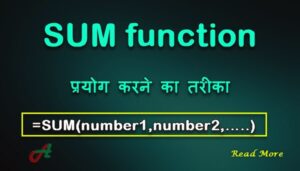How to use logic in excel ?
Using logical functions in Excel can greatly enhance your ability to analyze and manipulate data. Excel provides several logical functions, including IF, AND, OR, NOT, and IFERROR. Here’s a guide on how to use these logical functions effectively:
1. IF Function
The IF function performs a logical test and returns one value for a TRUE result and another for a FALSE result.
Syntax:
=IF(logical_test, value_if_true, value_if_false)
Example:
=IF(A1 > 10, "Greater than 10", "10 or less")
2. AND Function
The AND function returns TRUE if all its arguments are TRUE, and FALSE if one or more arguments are FALSE.
Syntax:
=AND(logical1, [logical2], ...)
Example:
=AND(A1 > 10, B1 < 5)
This will return TRUE if both A1 is greater than 10 and B1 is less than 5.
3. OR Function
The OR function returns TRUE if any of its arguments are TRUE, and FALSE if all arguments are FALSE.
Syntax:
=OR(logical1, [logical2], ...)
Example:
=OR(A1 > 10, B1 < 5)
This will return TRUE if either A1 is greater than 10 or B1 is less than 5.
4. NOT Function
The NOT function reverses the logical value of its argument. If the argument is TRUE, NOT returns FALSE; if the argument is FALSE, NOT returns TRUE.
Syntax:
=NOT(logical)
Example:
=NOT(A1 > 10)
This will return TRUE if A1 is not greater than 10.
5. IFERROR Function
The IFERROR function returns a specified value if a formula evaluates to an error; otherwise, it returns the result of the formula.
Syntax:
=IFERROR(value, value_if_error)
Example:
=IFERROR(A1/B1, "Division Error")
This will return “Division Error” if there is an error in A1/B1 (e.g., if B1 is 0).
Combining Logical Functions
Logical functions can be combined to create more complex conditions.
Example: Combining IF with AND
To check if a value in A1 is between 10 and 20:
=IF(AND(A1 > 10, A1 < 20), "Between 10 and 20", "Outside range")
Example: Combining IF with OR
To check if a value in A1 is less than 10 or greater than 20:
=IF(OR(A1 < 10, A1 > 20), "Out of range", "Within range")
Example: Combining IF with NOT
To check if a value in A1 is not equal to 10:
=IF(NOT(A1 = 10), "Not 10", "Is 10")
Practical Tips
- Use parentheses to ensure the correct order of operations when combining multiple logical functions.
- Logical functions can be nested to create complex conditions and decision-making formulas.
- Use descriptive labels for your conditions to make your formulas easier to understand.
By using these logical functions, you can build powerful and dynamic Excel spreadsheets that can adapt to different data conditions and provide insightful analysis.


